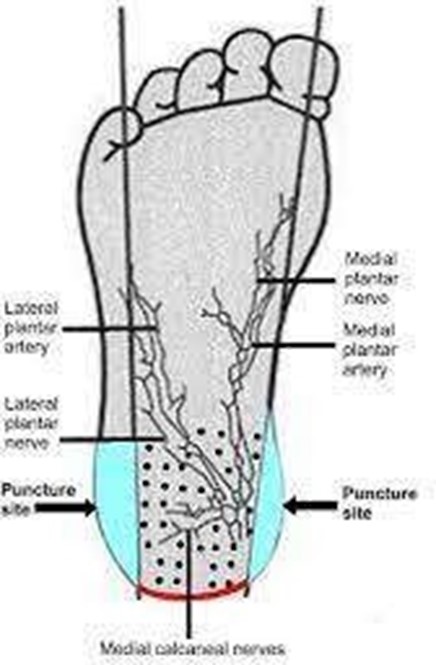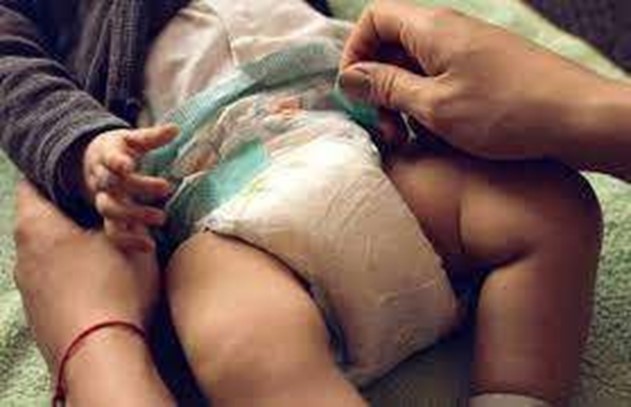A nurse is performing a heel stick on a newborn. Which of the following actions should the nurse take?
Puncture the heel on the inner aspect of the foot.
Use an automatic puncture device on the heel.
Cleanse the newborn's heel with an alcohol swab after the procedure.
Place an ice pack on the newborn's heel 5 min before the procedure.
The Correct Answer is B
“Use an automatic puncture device on the heel.” This is the most common and minimally invasive method to draw capillary blood from an infant for medical testing.

Choice A is incorrect because the heel should be punctured on the outer aspect of the foot to avoid damaging the calcaneus bone.
Choice C is incorrect because the heel should be cleansed with an alcohol swab
before, not after, the procedure.
Choice D is incorrect because there is no need to place an ice pack on the newborn’s heel before the procedure.
Nursing Test Bank
Naxlex Comprehensive Predictor Exams
Related Questions
Correct Answer is D
Explanation
Do not retract the foreskin to clean your baby’s penis during each diaper change.
The foreskin should not be retracted for cleaning during infancy.

Choice A is incorrect because you should clean around the umbilical cord stump with plain water and blot dry until it falls off naturally.
Choice B is incorrect because swaddling a baby tightly with their legs extended is not recommended.
Choice C is incorrect because a newborn should urinate at least six times a day.
Correct Answer is B
Explanation
A platelet count of 60,000/mm is low and can be a sign of HELLP syndrome (Hemolysis Elevated Liver enzymes Low Platelet count), which is a serious complication of preeclampsia.
Choice A is not the answer because a creatinine level of 0.8 mg/dL is within the normal range.
Choice C is not the answer because a hemoglobin level of 148 g/dL is within the normal range.
Choice D is not the answer because urine protein concentration of 200 mg/dL is within the normal range for preeclampsia.
Whether you are a student looking to ace your exams or a practicing nurse seeking to enhance your expertise , our nursing education contents will empower you with the confidence and competence to make a difference in the lives of patients and become a respected leader in the healthcare field.
Visit Naxlex, invest in your future and unlock endless possibilities with our unparalleled nursing education contents today
Report Wrong Answer on the Current Question
Do you disagree with the answer? If yes, what is your expected answer? Explain.
Kindly be descriptive with the issue you are facing.
